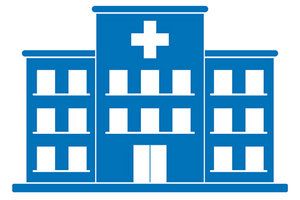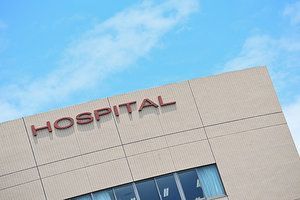Whether you accept it, avoid it or live somewhere in between, insurance coverage has become a defining issue for our profession. Patients increasingly expect to use their benefits, practitioners want to be compensated fairly for their time and expertise, and the system itself remains – at best – fragmented. The encouraging news is that coverage has expanded in meaningful ways. The challenging news is that reimbursement, across the board, remains inadequate.
An Emerging Partnership Model
Maryland University of Integrative Health (MUIH) has educated integrative health and wellness practitioners for the last 40 years, originally as an acupuncture clinic and school. The institution's transformative, relationship-centered programs integrate traditional wisdom with contemporary science. Emerging partnerships between MUIH and local hospitals are taking this integration to new heights.
According to the 2012 National Health Interview Survey (NHIS) conducted by the National Center for Complementary and Integrative Health, 33.2% of U.S. adults and 11.6% of U.S. children age 4 to 17 used complementary health approaches in 2012, a steady rise from just five years prior. Along with more widely accepted yoga and meditation, the study also found significant linear increase in the use of acupuncture, homeopathic treatment, and naturopathy. With increased use comes increased spending, which a report by NHIS estimated at $34 billion a year in 2007, and that estimate is likely to be much more now, nine years after the report's release.

These reports highlight two important draws for hospitals to begin integrating complementary practices: patient demand and patient spending. In the Baltimore/Washington, DC region where MUIH is located, hospital systems including Johns Hopkins Medicine and Mercy Medical Center have taken notice of this demand and now have in-house acupuncturists. MUIH has found that hospitals are showing increased desire and enthusiasm about bringing complementary health practitioners into their previously insular spheres. In the last year alone, MUIH has entered into agreements with two separate hospitals and has participated in collaborative initiatives with medically-centered institutions.
Recently, MUIH signed a formal Affiliation Agreement with University of Maryland Upper Chesapeake Health (UM UCH), which will unfold gradually and grow over the next five years. This innovative agreement will begin by offering MUIH acupuncture and nutrition student interns the opportunity to practice and collaborate with physicians, nurses, and other health providers at UM UCH to develop and offer an integrative model. From the start, both MUIH and UM UCH knew they did not want to just offer acupuncture services as an external option to patients. Rather, priority was placed on truly integrating acupuncturists with the rest of the patient's team of doctors, nurses, and other practitioners. MUIH student interns will participate in rounds with the healthcare team and actively coordinate with other professionals.

In turn, the UM UCH patient community will be served by having the opportunity to experience an increasingly wide range of natural approaches to health and healing. "By all accounts," says Frank Vitale, President and CEO of MUIH, "the future of health care in this country depends on a model that embraces collaboration and cooperation among providers and patients." In this integrative MUIH–UM UCH model, the individual is at the very center of his or her healing experience with increased choices for care.
In working toward this goal, both organizations have come to realize that a truly integrative model takes time to build and persistence to implement, along with open and continued communication starting with the CEOs, and moving through the legal departments and into the clinical setting. Education is at the foundation of the partnership. To prepare MUIH students for the hospital and similar medical environments, MUIH requires multiple courses structured around integrated healthcare settings. Doctoral acupuncture students learn about research literacy and have opportunities to participate in MUIH's Research Symposium, where they present their work publicly. They learn about advanced diagnostics, medical laboratory norms and best practices, and how to read report of findings. To prepare personnel at UM UCH, MUIH provides educational sessions for team members and patients to learn about natural medicine and integrative health.
Early on in the talks and planning, it became clear that both the hospital and MUIH needed to step outside of their tried and true routines in order to design new, collaborative processes for integrating services. After treating patients in the Natural Care Center on MUIH's campus for 40 years, processes and procedures were well established for student interns, faculty involvement, and patients. The hospital setting required MUIH to think differently and create new processes, some of which are detailed below.
- When working with hospitals, there are significant differences in terms of compliance issues. While those are standard across most hospitals, some of those processes have been new to MUIH.
- Detailed clearances for faculty and student interns including, in some cases, criminal background checks. Immunizations are often required and there is a strict dress code to abide by.
- While acknowledging that the hospital is responsible for the patient care plan, the acupuncture treatment would be directly supervised by MUIH faculty and not hospital staff. This was breaking new ground.
- Acupuncture intake forms and other note taking methods were created newly to fit with the hospital environment.
- Schedules had to align so that patients could move between various treatments.
- Even minor details like room size and availability needed to be taken into account.
Hospitals have repeatedly expressed interest in having MUIH build a referral guide to connect patient symptoms to modalities of care that have been backed by scientific evidence. For example, if a patient is suffering from nausea after a round of chemotherapy, an oncologist could look at a referral guide and see that there is published research about acupuncture being successfully used for chemotherapy or symptom management. The provider is then more likely to have confidence in referring the patient to the acupuncturist. As complementary health practices become more widely utilized, the body of research literature continues to deepen and expand. Evidence that supports the use of these practices will break down some of the barriers that currently prevent or deter physicians from referring to acupuncturists and other integrative health practitioners.
It is clear that evidence is important; it is the language that most Western providers speak and understand. However, MUIH takes the position that successful integration lies in being able to expand the definition of effective treatment to include approaches not yet supported by randomized, controlled trial research. MUIH refers to this work being evidence-informed, as well as informed by and grounded in the traditional wisdom of our fields. The openness to this concept is reflected in the hospital's leadership. "Treating the whole person, not just the disease or symptoms, is an integral focus in the UM UCH Kaufman Cancer Center," said Lyle E. Sheldon, FACHE, president and CEO of UM UCH. "Our affiliation with MUIH enhances our integrative health therapy services to promote balance of mind, body and spirit—a cornerstone of the mission of UM UCH."
For MUIH, the goals of hospital partnerships are both short- and long-term. One of the requirements of the university's doctoral programs in acupuncture and Oriental medicine is for all students to do some of their clinical work in an integrative setting and most students have a strong interest in contributing to multidisciplinary healthcare teams. The launch of the agreement with UM UCH includes having these doctoral students treating patients in their cancer center. The hospital was comfortable with this starting point because the doctoral students were already licensed practitioners. MUIH also has student interns in integrative and functional nutrition who need clinical hours to fulfill licensing requirements. UM UCH would like to serve more clients with nutrition services and has a licensed dietician who has agreed to serve as a "preceptor" for the students. Thus, the short-term goals for both parties are being satisfied, while longer term goals are being developed.
MUIH sees these partnerships as learning opportunities; ways to stretch and grow beyond previous limits as an organization and within the field of integrative health. It seeks to design a model that can be duplicated and sustained as the healthcare field continues to move toward greater integration of modalities. Working with hospitals has enabled the university to gain a deeper understanding of current health systems serving patients. Additionally, the transparency the hospitals have exhibited has given MUIH a peek into the inner workings of myriad departments within each setting — from the clinical intake process to the type of electronic medical records used and even priorities for the attorneys in drafting the Affiliation Agreement.
While the partnerships are fairly new and still experiencing growing pains, the commitments are strong and the future appears bright. The deep commitment to work through challenges and forge ahead at all costs started with the executive leadership of each organization. The early success stems from the shared vision for a preferred future of healthcare that is collaborative and patient-centered.
The hope is that this work will be able to pave the way for other partnerships around the country between integrative health universities and hospitals. The models that are being created can be duplicated or refined and the barriers might be broken down more quickly. Vitale certainly sees the possibilities for all. "This agreement between a university dedicated to natural medicine and a health system dedicated to the optimum patient experience is a small step with the potential for enormous impact."



